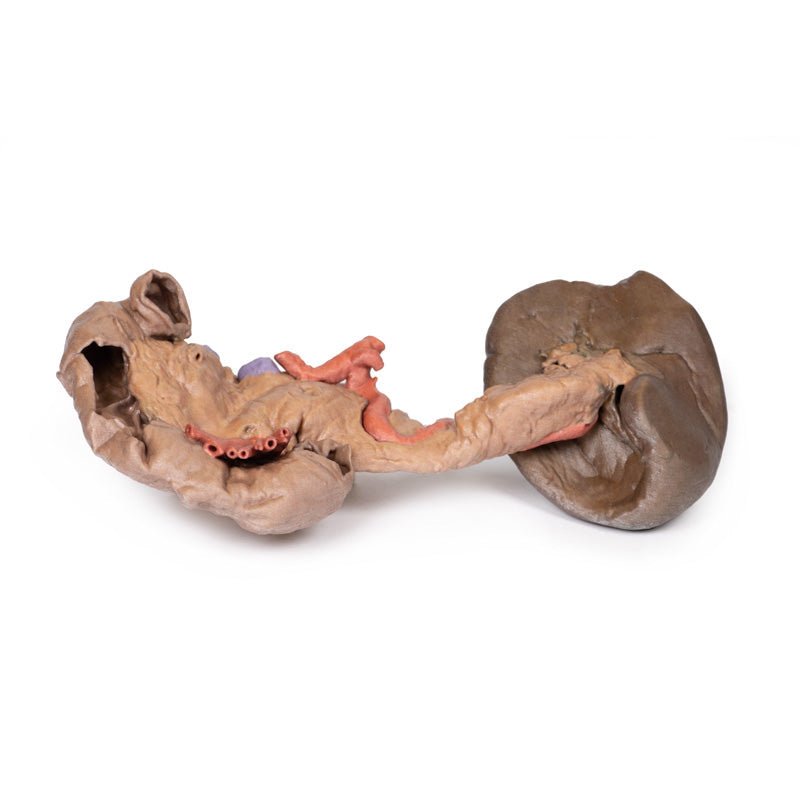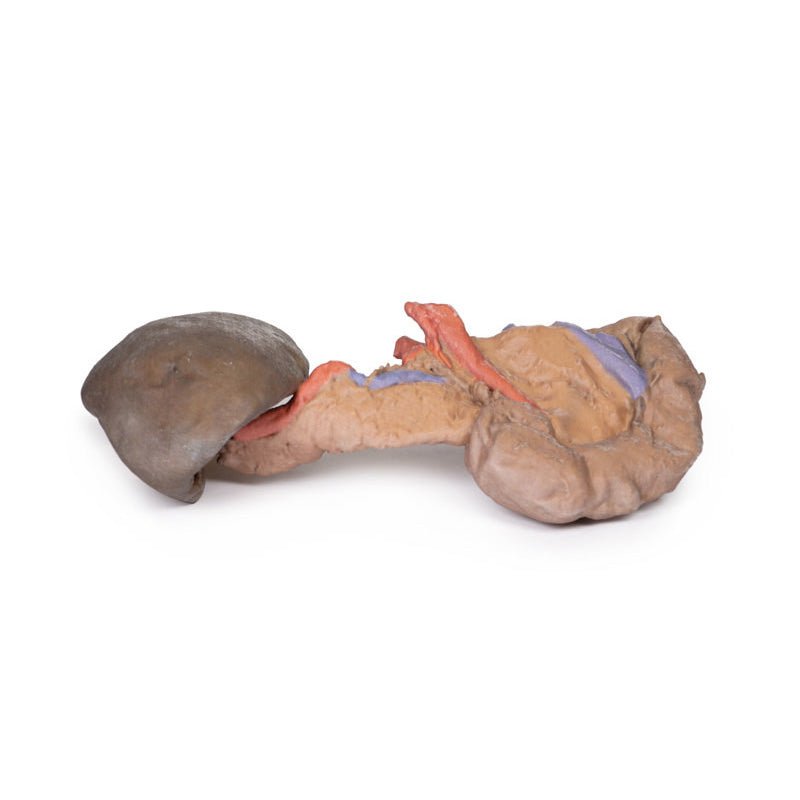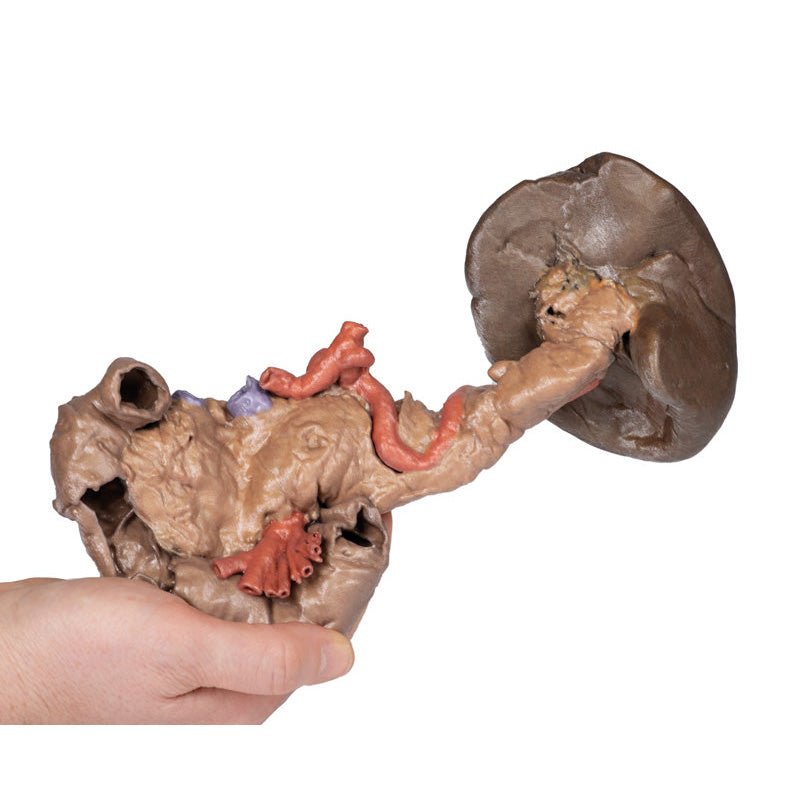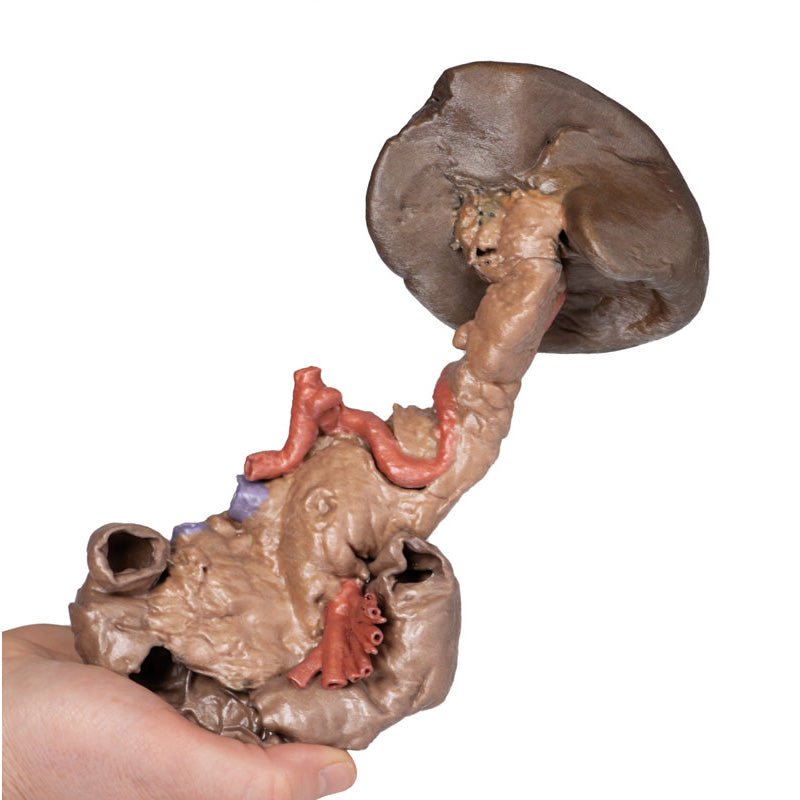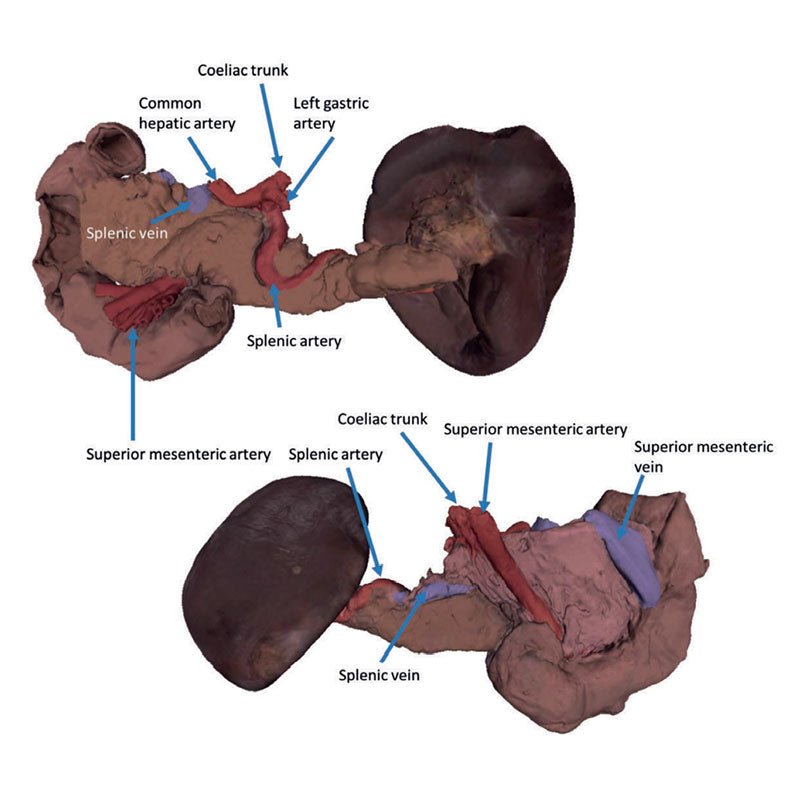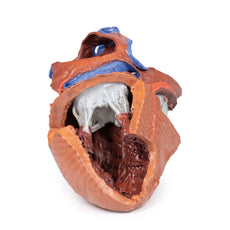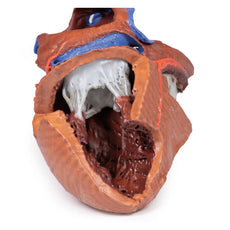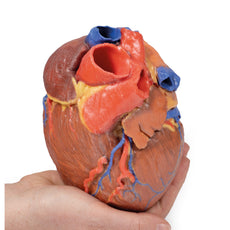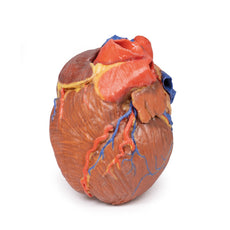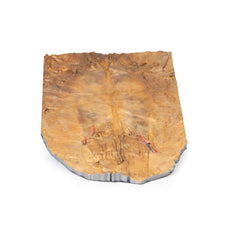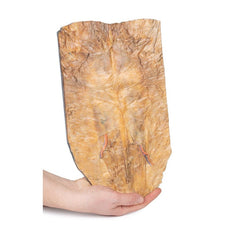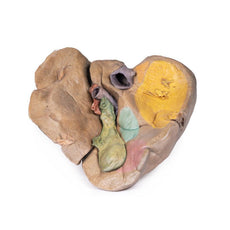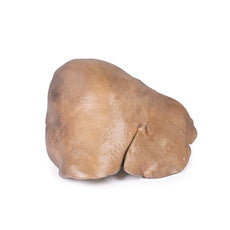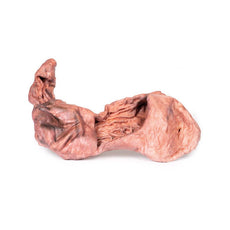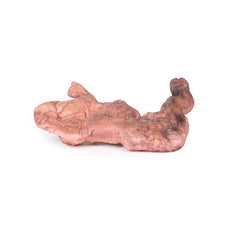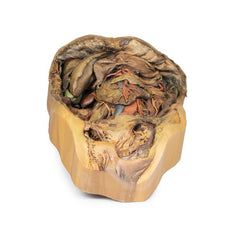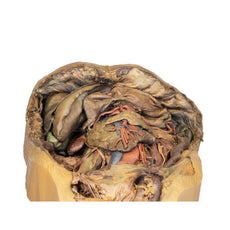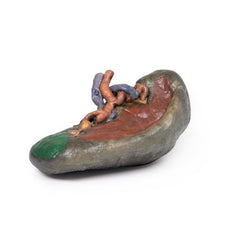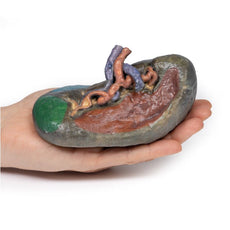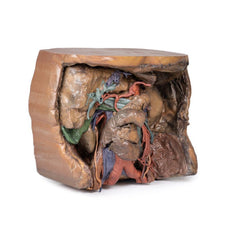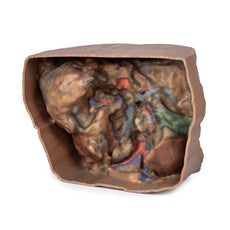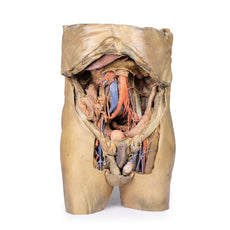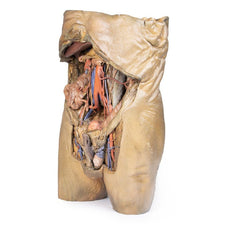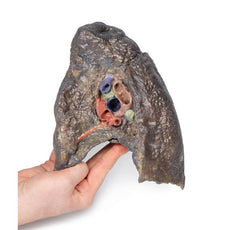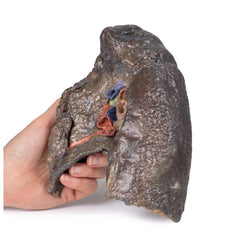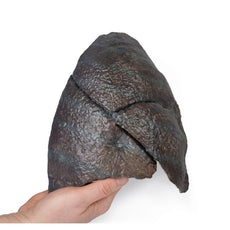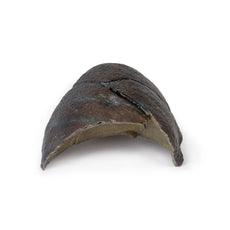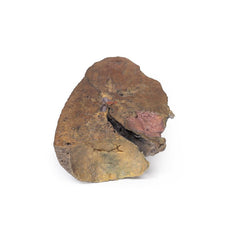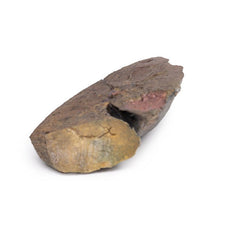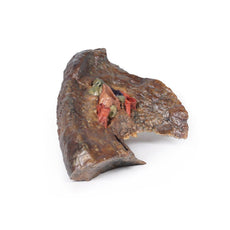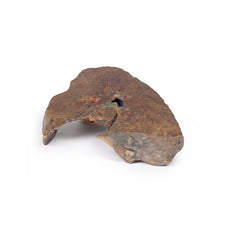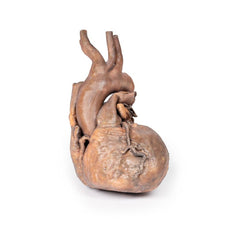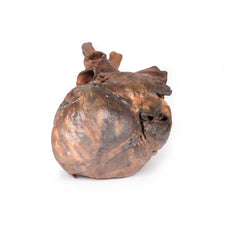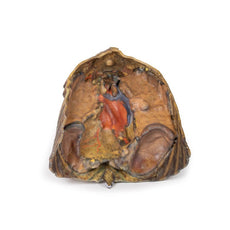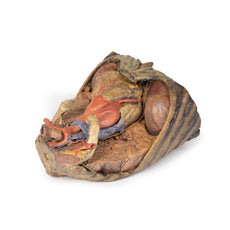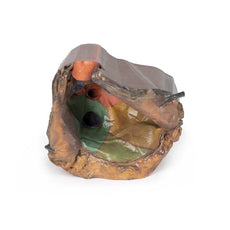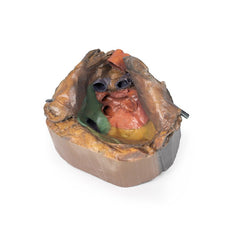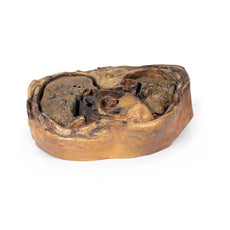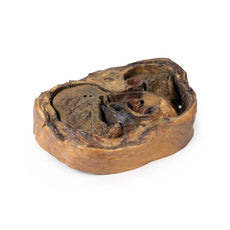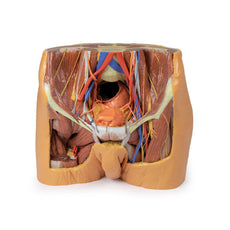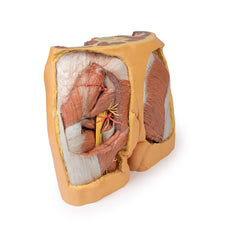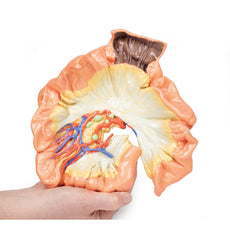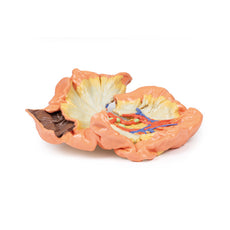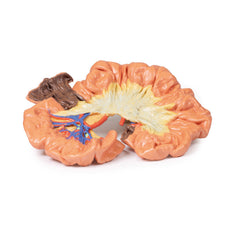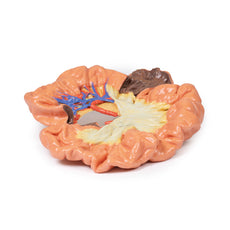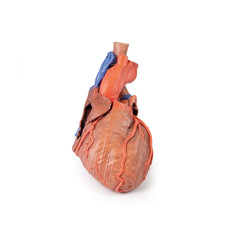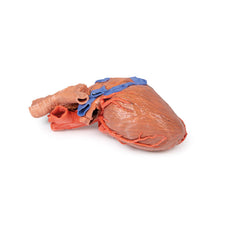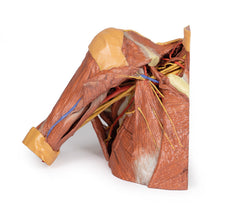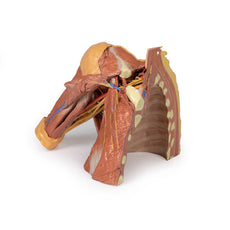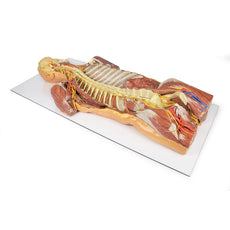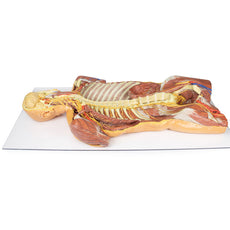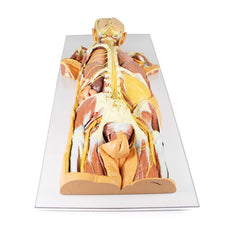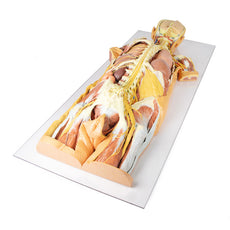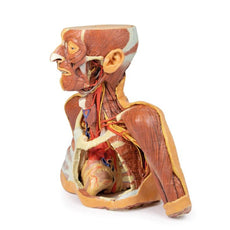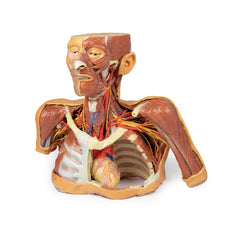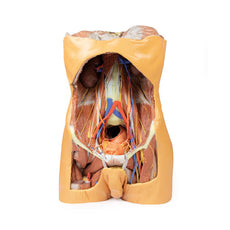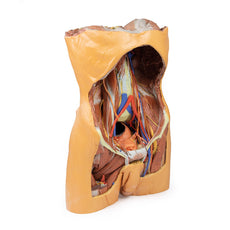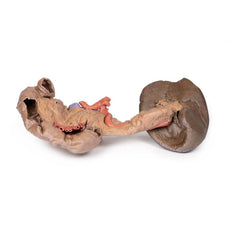Your shopping cart is empty.
3D Printed Spleen and Pancreas
Item # MP1135Need an estimate?
Click Add To Quote

-
by
A trusted GT partner -
FREE Shipping
U.S. Contiguous States Only -
3D Printed Model
from a real specimen -
Gov't pricing
Available upon request
3D Printed Spleen and Pancreas
This 3D model preserves the deep foregut organs: the descending, horizontal and ascending duodenum, the pancreas, and the spleen. A small window in the duodenum has been opened to allow for a view of the plicae circularis within this proximal part of the small intestine (and contrasts the strong rugae development seen in the stomach; see AW 42). The head of the pancreas is preserved in its normal position within the curvature of the duodenum, and a distinct uncus can be observed at the distal margin and adjacent to the exiting of the superior mesenteric artery (already divided into its numerous named branches). Along the superior margin of the body of the pancreas, the celiac trunk has been sectioned from the descending abdominal aorta. The complete splenic artery can be observed on its tortuous route from origin to the spleen, as well as the bases of the left gastric artery and common hepatic artery. Immediately adjacent to the celiac trunk is a small part of the splenic vein, which emerges from within the capsule of the pancreas, and is in part visible in along its route near the splenic artery. A small portion of the superior mesenteric vein adheres to the posterior aspect of the pancreas, representing the course of the vessel before it would normally join the splenic and form the hepatic portal vein. The tail of the pancreas is invested in the capsule of the spleen, and obscures any branching of the splenic artery prior to entering the organ (as seen on our other spleen models in A8 and AW 34, which provides further information on the anatomy and spatial associations of this organ).
Download: Handling Guidelines for 3D Printed Models
Handling Guidelines for 3D Printed Models
GTSimulators by Global Technologies
Erler Zimmer Authorized Dealer
The models are very detailed and delicate. With normal production machines you cannot realize such details like shown in these models.
The printer used is a color-plastic printer. This is the most suitable printer for these models.
The plastic material is already the best and most suitable material for these prints. (The other option would be a kind of gypsum, but this is way more fragile. You even cannot get them out of the printer without breaking them).The huge advantage of the prints is that they are very realistic as the data is coming from real human specimen. Nothing is shaped or stylized.
The users have to handle these prints with utmost care. They are not made for touching or bending any thin nerves, arteries, vessels etc. The 3D printed models should sit on a table and just rotated at the table.




